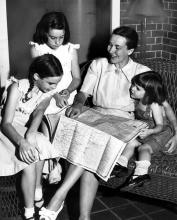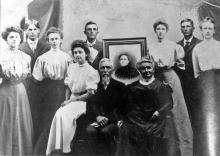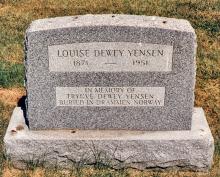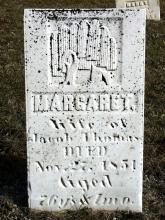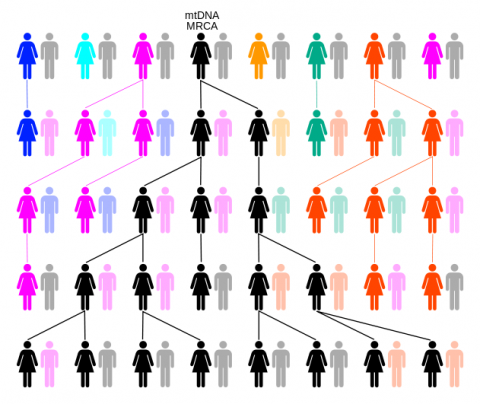Anyone who has conducted genealogical research knows that sometimes finding female ancestors can be a tricky business.
Sometimes women can be found by searching a husband's name. For example, this photograph of the Springer family is located in the "Springer, William L." Photographs envelope at the Champaign County Historical Archives.
Sometimes women are listed under their husband’s or father’s names, often listed as "Mrs." followed by her husband's name. At times, it may seem impossible to find a woman’s maiden name or other useful family history clues. Thankfully, we have some helpful resources to get you started with your research!
Well labeled photographs can be an invaluable asset in family history research. Be sure to label your personal photographs with first names, surnames and maiden names, along with dates to ensure individuals can be identified by future generations.
The Champaign County Historical Archives is home to various record types that can help with tracing women and you can search for these records using our online catalog, Local History Online. Some record types that you may find helpful include: birth and death registers, marriage records, cemetery records and gravestone transcriptions, court cases--including divorce, estate, and guardianship cases, newspaper articles, family photograph collections and church records. The Archives also holds many books in our print collection concerning historical women in both local and national contexts as well as biographies and oral histories of local women. Archives.com suggests using census records, naturalization documents, and occupational records. In addition to the resources listed above, Family Tree Magazine has compiled an annotated list of their Best Records for Finding Female Ancestors including cemetery records, court cases, and military pensions.
Gravestones and cemetery records can be an excellent source of information for family history research. Some stones contain minimal information, such as surname and year of death, while others provide first, last, and maiden names, birth dates, death dates, age at death, years of military service, names of family members, and even country of origin.
If you are looking for electronic resources, Cyndi’s List is a terrific starting place for genealogical research on the Internet. Cyndi has compiled research guides for various topics of interest, including a general resource page for researching female ancestors. The general page also links to more specific topics such as African-American women, Pioneers & Emigrants, Religious Leaders, Witches, and more!
Even if a gravestone does not have an individual's date of birth, it can sometimes be surmised from the age at death listed on the stone.
The Library of Congress has compiled Searching for Female Ancestors, a selected bibliography that includes both print and electronic resources and is subdivided into categories such as “Published guides to women’s history,” “Special topics,” and “Diaries and Bibliographies.” The Library of Congress also has a research guide dedicated to Women Pioneers, which provides some context for early American women’s ways of life.
For those who are interested in DNA and genetics, Mitochondrial Eve is an interesting topic concerning female ancestry. For a basic breakdown of the Mitochondrial Eve theory, check out this summary created by University of California, San Diego Professor Emeritus David K. Jordan.
According to the Mitochondiral Eve theory, all humans alive today descend from one common female ancestor who was born in Ethiopia approximately 200,000 years ago. This chart shows genetic drift and its effect on mitochondrial DNA inheritance.
As always, feel free to stop by the Archives or give us a call with any research questions!
Donica Miller, Archives Assistant

